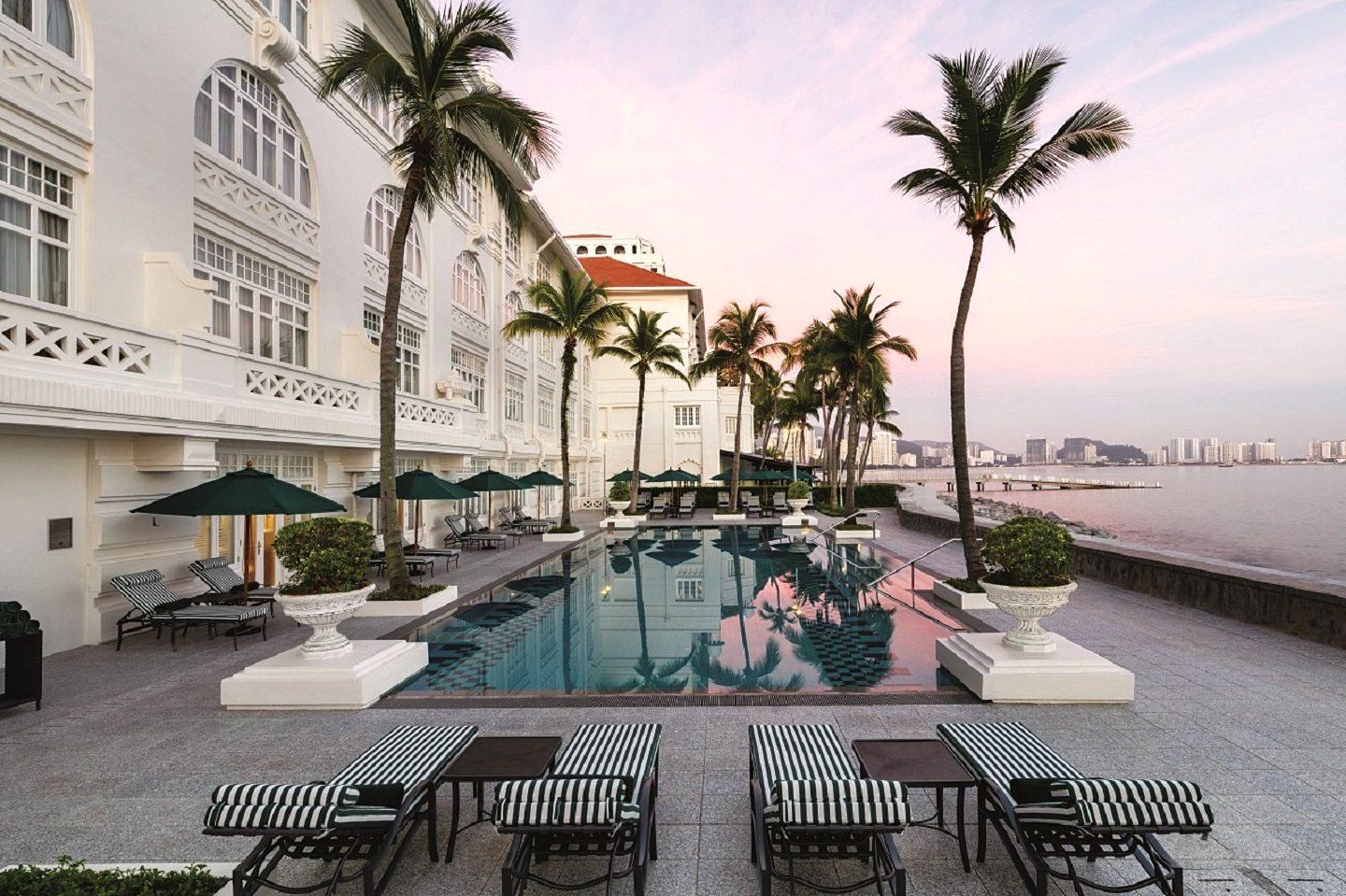
Ensuring further privacy and exclusivity, the Heritage Wing’s sea lawn swimming pool is reserved for Heritage Wing and Corner Suite guests only (All photos: Eastern & Oriental Hotel)
A hotel is a respite where you check into perfection and check out of the messy reality of life. It is precisely for this reason that famous writers are fond of ensconcing themselves, no matter how briefly, in an opulent suite. The fact that a hotel room can be both a blank slate and a teeming reservoir of inspiration makes it an escape where you can dream up an alternate universe that appeals to an idealised version of yourself.
Literary luminaries such as playwright Sir Noël Coward, novelist Rudyard Kipling and German-Swiss poet Hermann Hesse found a creative sanctuary in this part of the world — the Eastern & Oriental Hotel (E&O) was their adopted home. Although most of them could not recall the landmarks of the island or what brought them there in the first place, they had no trouble summoning an image of the edifice built by the Armenian Sarkies Brothers in 1885. Or as Hesse called it, “the most beautiful hotel for Europeans in the East Indies”.
The Steppenwolf writer, who lauded his four-room suite in his autobiographical book Aus Indien (Out of the Indies), was taken by the exotica of E&O’s “charming garden by the sea”, where the “the brown-green ocean lapped against the wall” and sails of countless junks look like “dragons’ wings leaning towards the stars, glowing in the last rays of daylight”.
While we are no writers of such prestige, it is not a stretch to consider a staycation at the E&O a temporary reinvention of your identity. Here, you can flee your bourgeois homes and indulge in the possibility of being someone other than yourself for the duration of your stay.
eo_heritage-wing-corridor.jpg
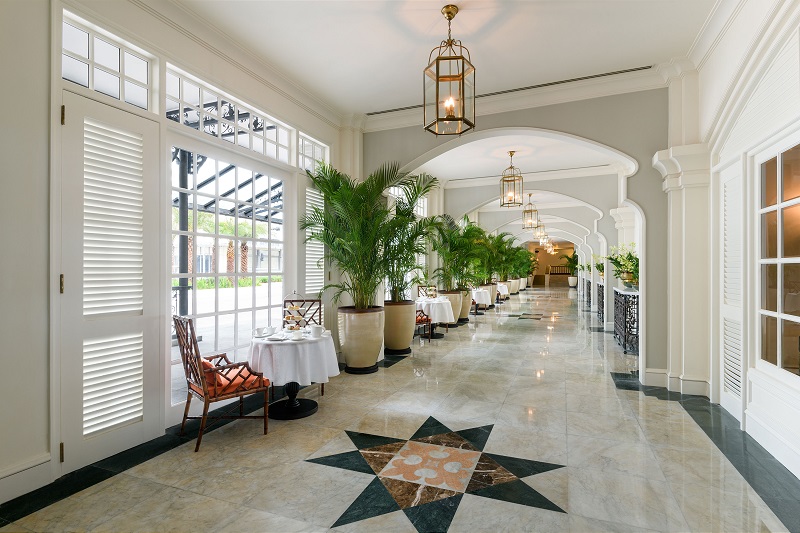
Ecstatic aesthetics
Thick clouds scudded down from Penang Hill and a drizzle rattled the casement windows when we checked into our deluxe suite in the Heritage Wing. Staying on a higher floor provided the best vantage point from which to observe the beehive of activity at the swimming pool below or the palm-fringed coastline ahead. That evening, a faint mist blurred the horizon, fusing sea and sky into a swath of blue infinity.
But the morning after was something else. Our silent reverie was penetrated by not just the swish of the waves and sigh of the wind, but also natural light that bathed the seating area decked out with a lounge chair, cushions with floral motifs and a sprawling Persian rug. The East-meets-West decor extends to the entire room too, where furnishings of various periods are juxtaposed in more unorthodox combinations.
4cd47b77-0264-4af3-aad6-fa6e8d62c5c0.jpg
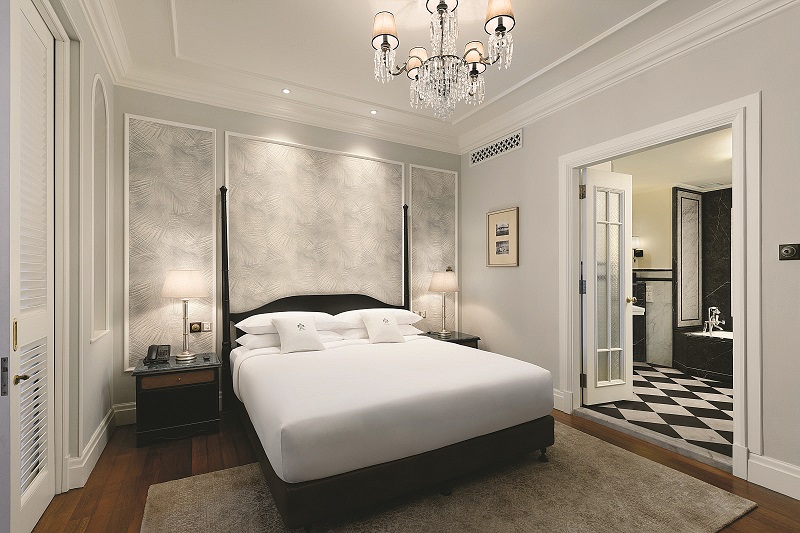
A king-size bed with Egyptian cotton sheets occupies the middle of the space, surrounded by English-styled lamp shades and oriental lacquered cabinets that stow away authentic bone china teacups. Dramatic black-and-white tiles pave the way to the bathroom, souped up with a lavish bathtub flanked by a vanity sink on each side. Toiletries courtesy of organic wellness brand Panpuri, which come in refillable dispensers to keep plastic waste to a minimum, smell refreshingly of Thai jasmine and mint.
Like the old-fashioned light switches in the suites that have maintained their lustre, most key attractions at E&O survived despite the upgrading works. The hotel lobby still exudes a mood of reminiscence, where the signature cupola still enthrals generations of visitors with its booming echo that broadcasts sound to the entire foyer. Another architectural inheritance that the hotel takes great pride in is the antiquated Waygood-Otis cage lift that is in mint working order but no longer in use.
665483cc-1b0a-4466-9192-584a372351bf.jpg
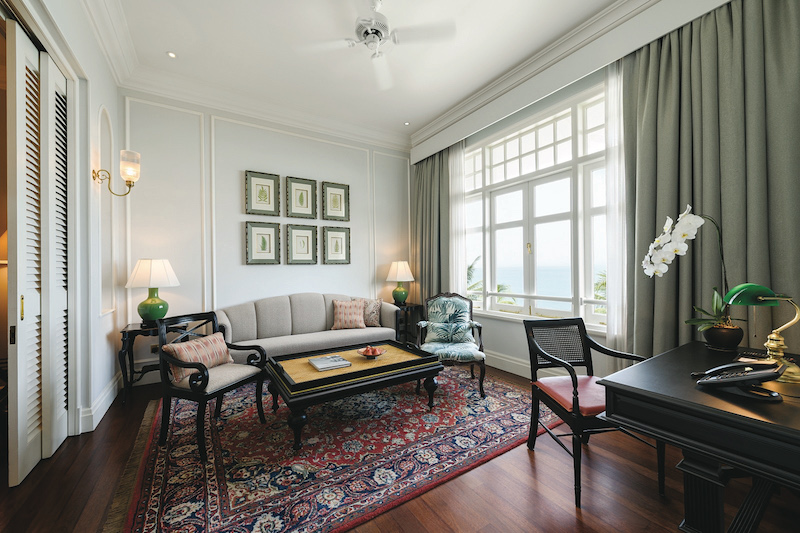
Although Heritage Wing guests can now experience a more personalised service with in-suite check-in and complimentary unpacking, there is still something special about making a pit-stop at the reception desk before retiring to their cocoon of privacy. E&O’s buzzing lobby is a striking dichotomy: Being greeted by doormen clad in two-piece khaki uniforms first worn by the British army transports you to the ancient colonial past, while the sight of technology and whirr of the coffee machine bring you right back to five-star present. The heartbeat of the hotel ushers in a new era of hospitality, just as it simultaneously honours how far its longstanding legacy has come.
Culinary heritage with a view to feast on
There is more to hotel life, of course, than round-the-clock butler service and the mini bar that is replenished daily. Imagine for a moment a stroll to breakfast through colonnaded galleries, past contemporary paintings, before arriving at a sea-fronted lounge that looks like someone’s private library. The Cornwallis, exclusive to Heritage Wing guests only, has replaced its buffet spread with à la carte options for now because of social distancing measures. But if eggs Benedict and pancakes do not quite match your morning pace, pad lazily towards the pool for a lap or curl up with a book on the sun-dappled terrace.
Practicality aside, E&O is also a swirl of romance and intrigue. In the past, European bachelors from as far away as Shanghai congregated at the old Palm Court Bar to meet their wives-to-be. You would find planters, traders and sailors nursing a stengah (a concoction with equal measures of whisky and soda water served over ice) or debonair travellers nodding to classics during orchestral concerts every Sunday morning. The current Palm Court has been turned into an informal eatery with an à la carte menu to satisfy your local and international cravings. Its popular three-tiered afternoon tea remains a firm mainstay — while away the time with a selection of Harney & Sons or champagne as you and your posse debate over the pronunciation of “scones”.
It is not until one ambles along the hotel’s manicured lawns that the scenery starts to feel otherworldly. The rest of Penang — its chaos and glare of city lights — feels like a hazy dream when one looks up at the trees at E&O, which make fascinating sculptures against the sky. The most majestic of them all is the island’s key heritage Java olive tree, or kelupang in Malay. Planted before the hotel’s inception, the largest and oldest tree of its species in Penang was revered as a holy tree by the Tamil-Indian staff of the hotel, who, for a while, set up a shrine at its foot to pay respect to deity Muniyandi. The towering relic also lent its name to one of the most popular dining outlets in the hotel.
43cc1713-a891-4734-96b7-98d2307139a8.jpg
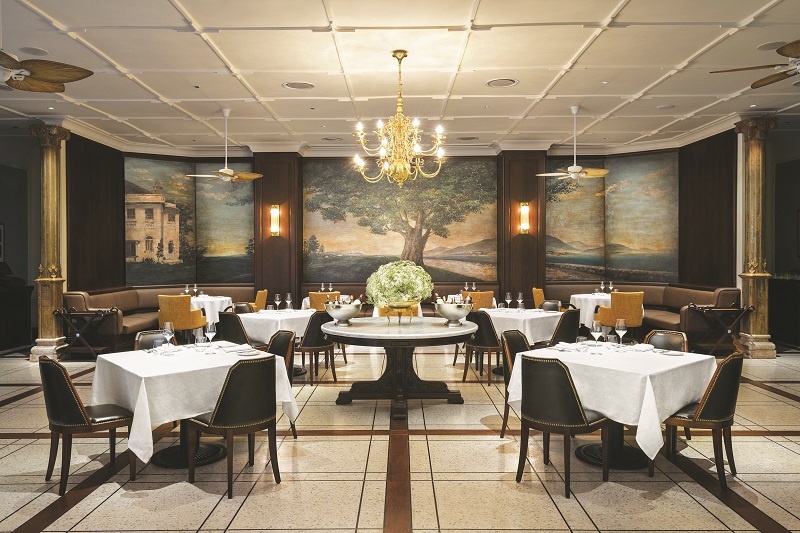
The new Java Tree turns back the clock a little, rehashing the elegance of a bygone epoch while maintaining all the trappings of a contemporary restaurant to accommodate modern diners who still make an effort for a sartorial night out. Linen-dressed tables, leather chairs and walls with dark wood add refinement to the space, anchored by not the hulking chandelier hung overhead but a ceiling-high Java tree painting.
Paying tribute to the hotel’s roots and worldly influences, the kitchen showcases its ethnic bearings with an assortment of Straits Nyonya recipes, and classic European dishes such as Salted Cod Fillet, Beef Bourguignon and a Grand-Marnier-glazed Duck Breast à l’Orange. For the undecided, the Nyonya Signature Set will give you a taste of everything, from the homemade Pie Tee, Lobak, Mackerel Otak-Otak, Duck Broth “Itik Tim”, Terung Tempra and Sago Gula Melaka. Here, it is patience that seasons the mains. Slow-cooked Oxtail Gulai caramelises in a heady mix of turmeric, tamarind and lemongrass; while creamy coconut milk tames an otherwise fiery Pineapple Prawn Curry. You will need a lot of the Kebuli steamed rice, a Nyonya tradition that is served from a woven basket.
prawn_curry_at_java_tree.jpg
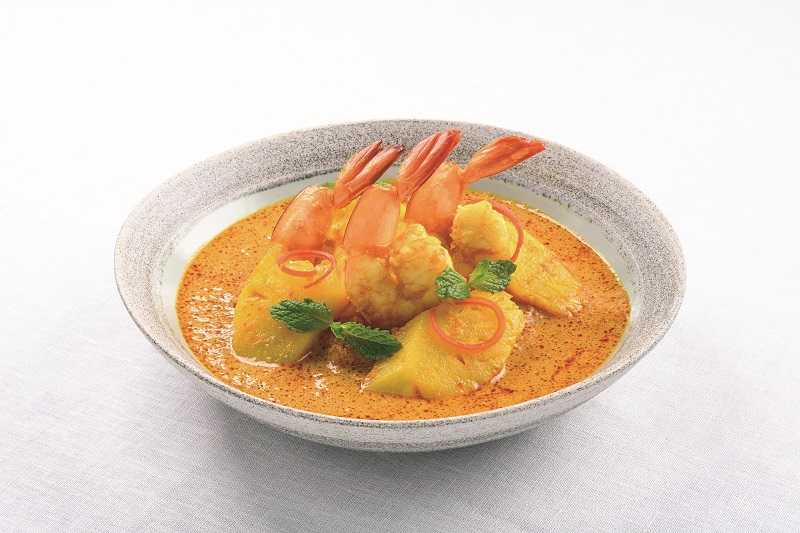
We could just cap off the day by the waterfront, lifting endless slices of cake from the dessert trolley to our mouths and watching the night enfold the island. But the dance-y jazz music and tinkling of wine glasses at the Farquhar’s Bar next door proved too tempting to ignore. Now relocated to the Heritage Wing, the old-school pub has been remodelled into a vintage bar with an elevated cocktail and wine list.
Leather lounges allow couples to huddle over a bottle of Connonau di Sardegna and Peranakan Sliders, crispy mantao buns with chunks of braised duck breast sandwiched between. The long bar counter of oak and brass is a romantic perch, where troubled souls can sit with an Aged Negroni in hand while imbibing the view of the Andaman Sea. If you prefer your night just slightly stirred and not wildly shaken, signatures such as Tommy’s Margarita or an Espresso Martini will send you on your merry way.
ff6dda39-f308-4fd3-a271-4197e7ef1b07.jpg
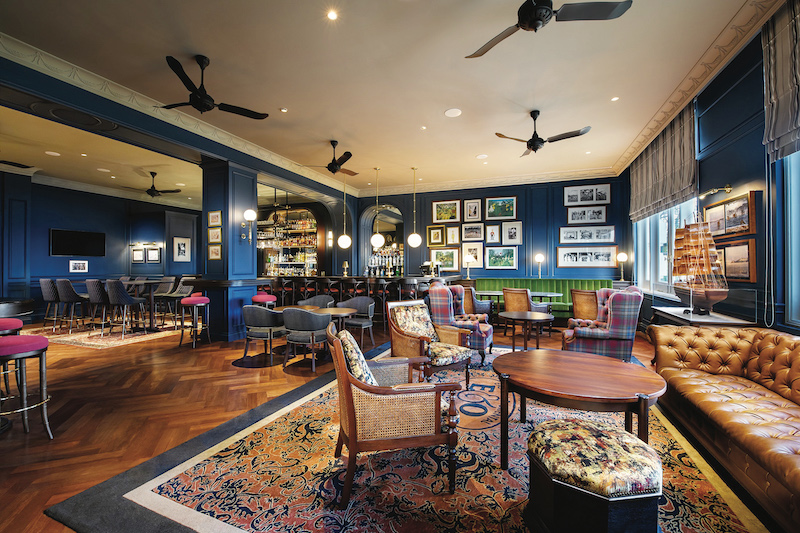
The return of the Penang dowager
Renovating a heritage hotel is often tricky, as it combines architectural language and spatial characteristics of two historical stages. But what E&O has achieved is a dialogue between the old and the new, imbued with top-notch hospitality. Like a vast time capsule, the hotel has developed quite a cachet over the years — the wattage of illustrious men and women who have left their footprints on the hotel’s marble floors is enough to power the entire island. Our stay might have been brief, but it was still fun to put on our fancy stilettos and walk through the hallways of grandeur.
This article first appeared on Sept 7, 2020 in The Edge Malaysia.


